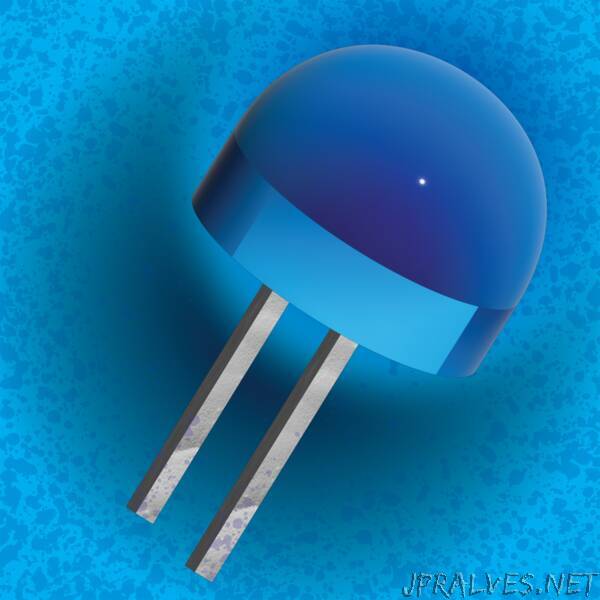
“The absolute internal quantum efficiency (IQE) of indium gallium nitride (InGaN) based blue light-emitting diodes (LEDs) at low temperatures is often assumed to be 100%. However, a new study from University of Illinois Urbana-Champaign Electrical and Computer Engineering researchers has found that the assumption of always perfect IQE is wrong: the IQE of an LED can be as low as 27.5%.
This new research, “Low temperature absolute internal quantum efficiency of InGaN-based light-emitting diodes,” was recently published in Applied Physics Letters.
As ECE associate professor Can Bayram puts it, LEDs are the ultimate lighting source. Since their invention, they have become increasingly popular due to their energy efficiency and cost-effectiveness.
An LED is a semiconductor that emits light when current flows through the device. It generates photons through the recombination of electrons and holes (carriers), releasing energy in the form of photons. The color of the light emitted corresponds to the energy of the photon.
InGaN-based blue LEDs enable bright and energy-saving white lighting. The transition to solid-state lighting sources has significantly reduced energy needs and greenhouse gas emissions, but continual efficiency improvements are necessary to hit energy savings goals in the long term. The U.S. Department of Energy’s 2035 roadmap calls for blue LED efficiency to increase from 70% to 90% and furthering energy savings by 450 terawatt hours (TWh) and CO2 emission savings by 150 million metric tons.
Bayram says, “The question is, how can we push this ultimate lighting source further? The answer is by understanding its absolute efficiency, not relative efficiency.” Relative efficiency benchmarks a device with itself, while absolute efficiency allows for comparison across different devices by measuring the efficiency on a commonly shared scale.
IQE is defined as the ratio of the generated photons to the injected electrons in the active region of the semiconductor and is an important metric to quantify the performance of LEDs. The most widely used method to quantify IQE is by temperature-dependent photoluminescence. In such analyses, it has been assumed that at low temperatures (4, 10, or even 77 Kelvin), there is 100% radiative recombination- meaning producing a photon. At room temperature, because of non-radiative mechanisms- which emit excess energy as heat, rather than photons- the efficiency is significantly lower. The ratio of the two photoluminescence intensities gives a relative efficiency of the LED.
The original assumption has been that at low temperatures, there are no non-radiative recombination- all the loss mechanisms are “frozen.” Bayram and graduate student Yu-Chieh Chiu assert, however, that this assumption may be wrong because non-radiative effects might not in fact be completely frozen out at low temperatures.
In their paper, Bayram and Chiu demonstrate a different method for revealing low temperature absolute IQE of InGaN-based LEDs. Using a “channel-based” recombination model, they report surprising results: the absolute IQE of the LED on traditional sapphire and silicon substrates is 27.5% and 71.1%, respectively- drastically lower than the standard assumption.
To explain these unexpected results, Chiu says that the channel-based recombination model is one of the ways to think about what happens inside the active layer of the LED and how recombination in one channel affects another channel. A channel is a pathway that a carrier may take to recombine radiatively or nonradiatively.
“To determine the efficiency of the blue LED, usually only the blue emission is considered,” Chiu says. “But that ignores the effects of everything else happening inside the device, specifically the non-radiative and defect luminescence channels. Our approach is to get a more holistic view of the device and determine, if there is recombination in the blue channel, how is that affected by the second and third channel(s)?”
As research on the LED continues to advance, it is important to know an absolute efficiency rather than a relative efficiency. Bayram stresses that “the absolute efficiency is very important to the field so that everyone can build on each other’s knowledge rather than each group improving their own efficiency. We need absolute measurements, not just relative measurements.”
To meet the efficiency standards laid out by the DOE, it will be increasingly important to properly quantify the efficiency of LEDs. Even a 1% increase in efficiency will correspond to tons of carbon dioxide savings annually. Chiu says, “By understanding the absolute efficiency, instead of the relative efficiency, that will give us a more accurate picture and allow us to improve devices further by being able to compare them to each other.”“
